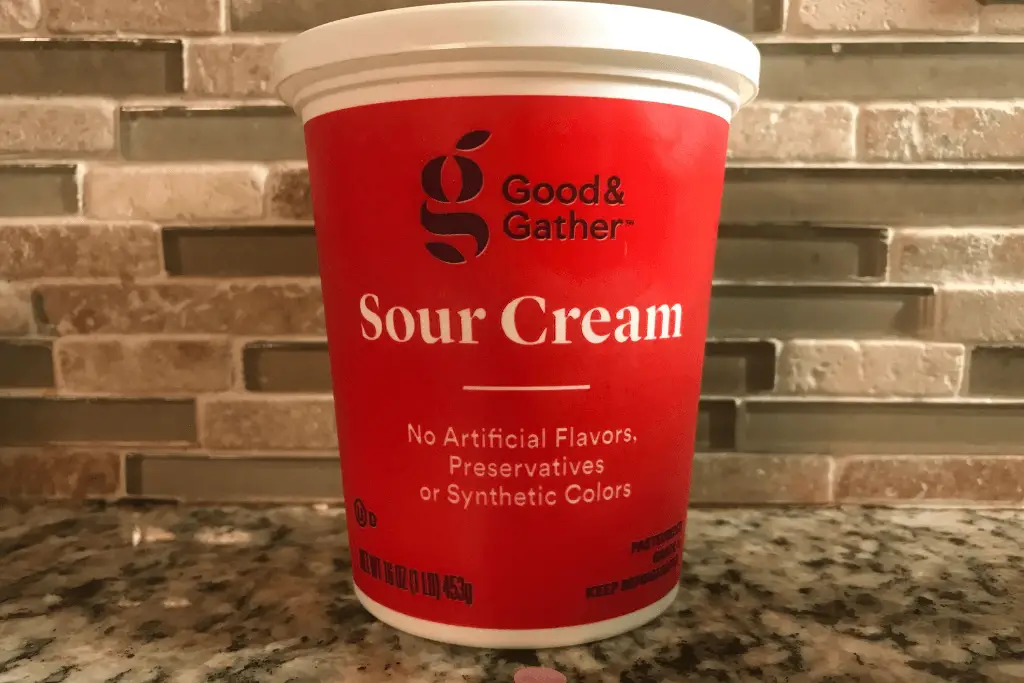Sour cream is typically creamy, thick, and smooth straight from the store. However, once you use it for your meals and let it sit in the refrigerator for some time, something commonly happens to it. A watery substance forms on the surface. Many people find this substance undesirable or simply disgusting. Let us explain what this liquid is and why you may not wish to discard it.
How Sour Cream is Made
Sour cream is made by fermenting cream with a butterfat percentage no lower than 18 percent for the full-fat variety. A safe bacteria is introduced into the cream that transforms lactose into lactic acid. The lactic acid helps the mixture “sour ” and thicken as it sits for several hours at a temperature of about 75°F before it is chilled. Commercial varieties of sour cream are pasteurized and homogenized during processing.
What is the Watery Substance in Sour Cream
The liquid that forms on the top of sour cream is called whey. Whey is one of two proteins found in milk. Stabilizers are often added to sour cream to help minimize whey separation and to improve its texture. Common stabilizers include ingredients like carrageenan, guar gum, and modified food starch. Whey rises to the surface when sour cream is agitated or as it rests in the refrigerator for some time.
What to Do With Whey
The whey that separates from the sour cream is harmless assuming the product has not spoiled. It can be stirred back into the sour cream or dumped into the sink. If you opt to dump it, the sour cream will be thicker which may or may not be beneficial based on individual taste. Yogurt is a good example of how the amount of whey impacts dairy thickness. Greek yogurt is thicker than regular yogurt because more whey is strained from it.
Whey liquid provides nutritional benefits so you may want to think twice before pouring it down the drain. For example, a cup of liquid whey has about 2 grams of protein, 66 calories, less than 1 gram of fat, and 13 grams of carbs. It also has several vitamins and minerals such as vitamin C, vitamin E, calcium, iron, magnesium, phosphorous, potassium, zinc, copper, manganese, and selenium.
How to Prevent Watery Sour Cream
A simple hack to prevent sour cream from being runny is to store it lid-side down. This isn’t going to give your refrigerator that magazine-style perfect look but at least your sour cream won’t collect liquid on its surface. Of course, be sure the lid is secure otherwise you will be in for quite a mess.
Sources:
USDA Specification for Sour Cream and Acidified Sour Cream. https://www.ams.usda.gov/sites/default/files/media/sourcream.pdf
Almer, G. (n.d.). The Nutrition in Liquid Whey. livestrong.com. https://www.livestrong.com/article/425693-the-nutrition-in-liquid-whey/.

